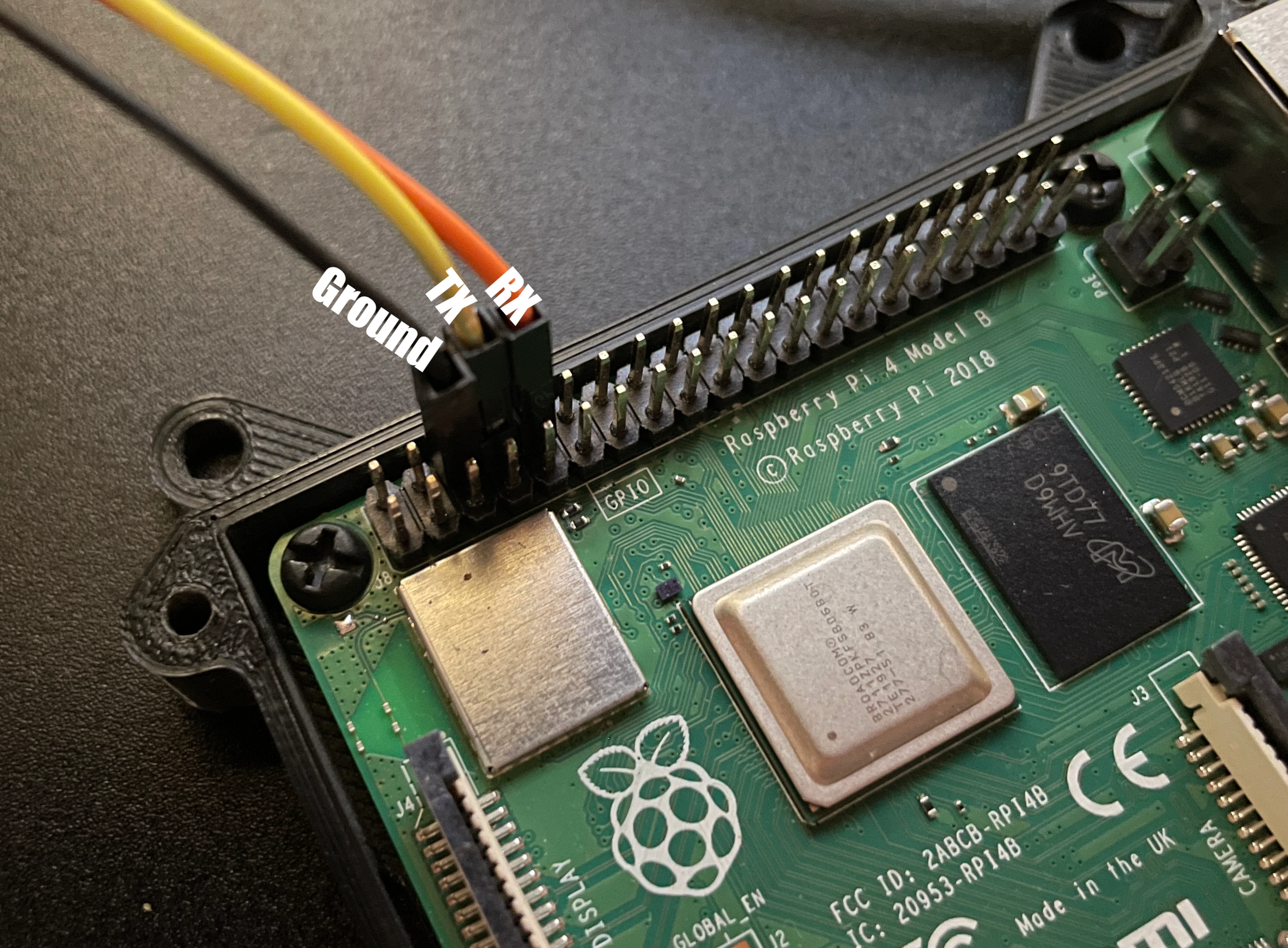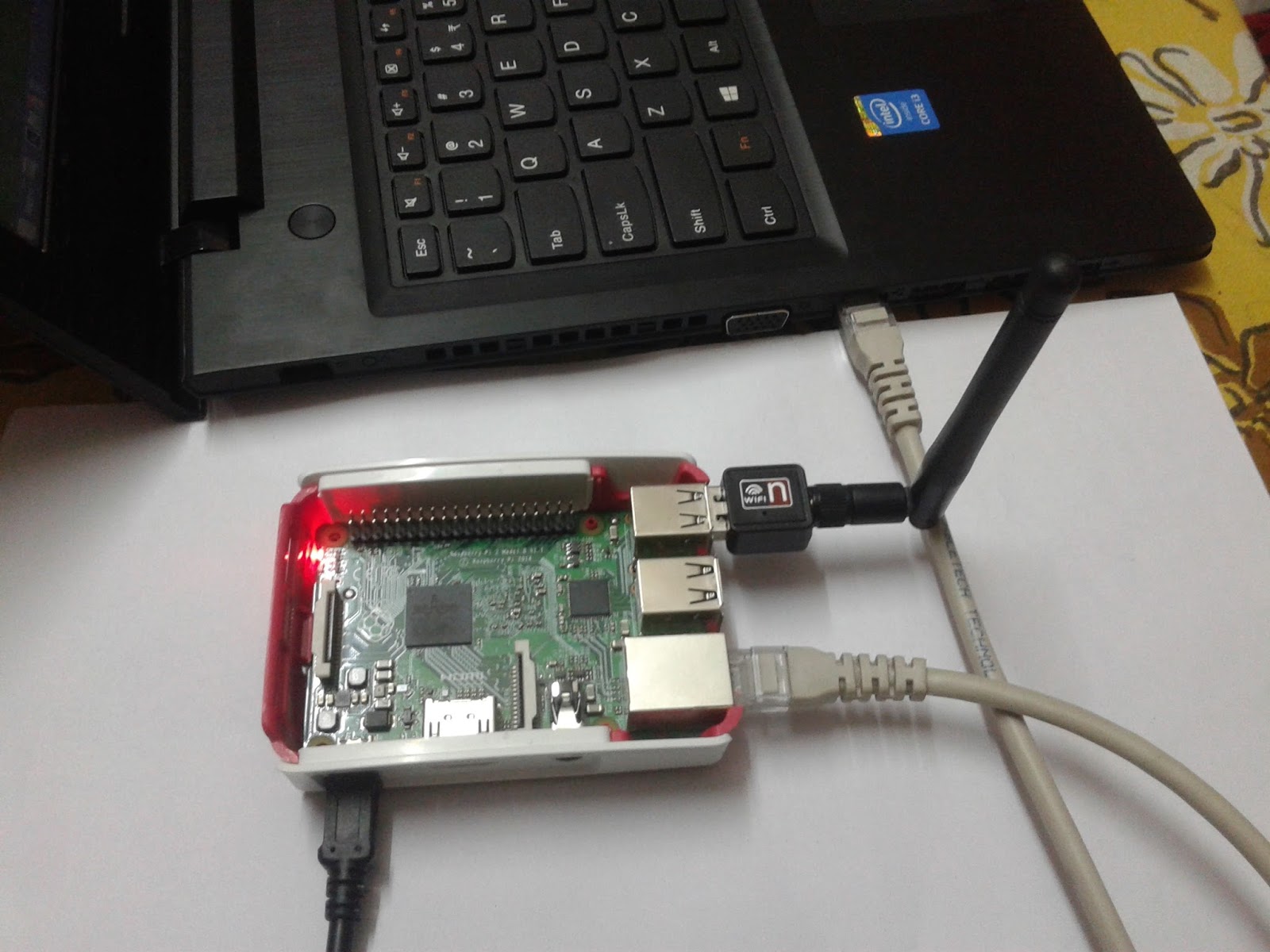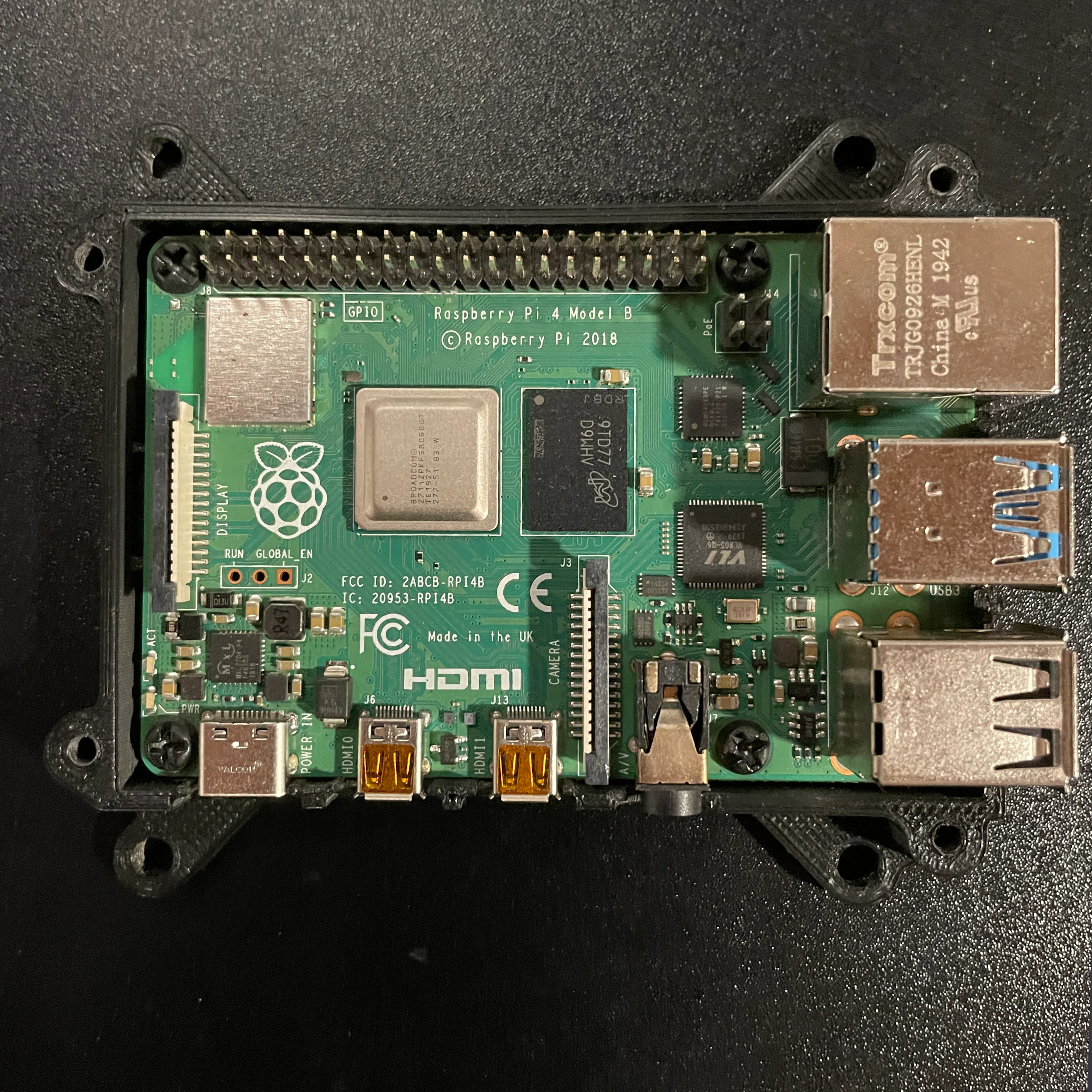Unlock Your Pi: Remote Access From Anywhere, Anytime
The Raspberry Pi, a marvel of modern computing packed into a credit-card-sized board, has revolutionized how enthusiasts, educators, and professionals approach computing projects. From home automation hubs to miniature servers and IoT devices, its versatility is unmatched. However, one common challenge arises when managing these tiny powerhouses: how do you interact with them without constantly connecting a monitor, keyboard, and mouse? This is where the magic of remote access comes into play, transforming your Raspberry Pi into a truly headless, accessible-from-anywhere device.
Perhaps you’ve set up a Raspberry Pi in a hard-to-reach spot, or you maintain a "fleet" of remote microcomputers for various tasks. Constantly plugging in peripherals is not only inconvenient but also eliminates the very benefits of the Pi's compact size. The good news is that accessing your Raspberry Pi remotely is not just possible; it's straightforward, offering a level of flexibility that truly unleashes its potential. In this article, I’ll share a few easy (and free) ways to access your Pi remotely, covering everything from simple terminal control to full desktop experiences, whether you're on the same network or miles away.
Table of Contents
- Can You Control Raspberry Pi Remotely? Absolutely!
- Understanding Remote Access on Raspberry Pi
- Method 1: Secure Shell (SSH) for Terminal Access
- Method 2: VNC for Full Desktop Control
- Method 3: TeamViewer for Seamless Remote Control
- Method 4: Remote.it for Port-Forwarding-Free Access
- Beyond the Local Network: Accessing Your Pi from Anywhere
- Essential Tips for a Smooth Remote Access Experience
Can You Control Raspberry Pi Remotely? Absolutely!
The short answer to "Can you control Raspberry Pi remotely?" is a resounding "Yes!" This capability is one of the most powerful features of the Raspberry Pi, enabling truly flexible and efficient management of your devices. The idea is to control your Raspberry Pi from another computer, either on the same local network or from anywhere in the world, depending on the solution you use. This setup is particularly useful for managing your Raspberry Pi without needing a dedicated monitor, keyboard, or mouse connected to it. Eliminating these peripherals can save you money, space, and a lot of hassle, especially if your Pi is tucked away in a server closet, embedded in a project, or serving as a headless media center.
There are several different ways to go about this, including using a remote desktop application, SSH, or VNC. Each method offers a unique set of advantages and is suited for different scenarios. Whether you need to execute simple commands, transfer files, or interact with the graphical user interface (GUI) as if you were sitting right in front of it, a remote access method will work well for your project. This flexibility is what makes the Raspberry Pi an indispensable tool for so many applications, from smart home automation to educational robotics.
Understanding Remote Access on Raspberry Pi
Before diving into the specific methods, it's crucial to understand what remote access on a Raspberry Pi entails. At its core, Raspberry Pi remote desktop software allows you to access and control your Raspberry Pi device from a different computer or mobile device as if you were sitting directly in front of it. This means you can launch applications, browse files, and manage settings using a graphical interface, or execute commands directly in the terminal.
The primary distinction in remote access methods lies in whether you need terminal access or full desktop access. Terminal access, often achieved via Secure Shell (SSH), provides a command-line interface, which is perfect for server management, running scripts, and performing administrative tasks. However, it will only provide access to the terminal, not the entire desktop. For tasks requiring a visual interface, such as web browsing, programming in an IDE, or interacting with desktop applications, you'll need a remote desktop solution that provides a graphical user interface (GUI). Solutions like TeamViewer, VNC, or XRDP can provide remote access to a Raspberry Pi over the internet, giving you that full desktop experience.
I’ve talked a lot on this website about remote access solutions for Raspberry Pi, with different applications and their pros and cons. The key is to choose the method that best fits your needs, balancing ease of setup, security, and the type of interaction you require with your Pi.
Method 1: Secure Shell (SSH) for Terminal Access
SSH, or Secure Shell, is arguably the most fundamental and widely used method for remotely accessing a Raspberry Pi. It's a network protocol that allows data to be exchanged over a secure channel between two networked devices. You can access the terminal of a Raspberry Pi remotely from another computer on the same network using the Secure Shell (SSH) protocol. This method is incredibly powerful for command-line tasks, scripting, and server management, offering a secure and efficient way to interact with your Pi without a graphical interface.
The main advantage of SSH is its security; it encrypts all communication between your client computer and the Raspberry Pi, protecting your data from eavesdropping. It's also lightweight, requiring minimal resources on both ends. However, as mentioned, its primary limitation is that it only provides access to the terminal, not the entire desktop. For many headless Pi projects, this is all you need, but for others, you'll want a full GUI.
Setting Up SSH on Your Raspberry Pi
The steps to use SSH for remote Raspberry Pi access are as follows:
- Enable SSH Server: By default, Raspberry Pi OS disables the SSH server for security reasons. You can enable it in a few ways:
- Via Raspberry Pi Configuration: On the Pi's desktop, go to `Menu > Preferences > Raspberry Pi Configuration > Interfaces` and enable SSH.
- Via Terminal: Run `sudo raspi-config` in the Pi's terminal, navigate to `Interface Options > SSH`, and enable it.
- Headless Setup: If setting up headless, create an empty file named `ssh` (no extension) in the boot directory of your SD card before first boot.
- Note the Raspberry Pi IP Address: You'll need this to connect. You can find it by typing `hostname -I` or `ifconfig` in the Pi's terminal. Make sure your Pi is connected to the same network as the computer you'll be using for remote access.
- Connect from Another Computer:
- Linux/macOS: Open a terminal and type `ssh pi@YOUR_PI_IP_ADDRESS` (replace `YOUR_PI_IP_ADDRESS` with your Pi's actual IP). The default username is `pi`.
- Windows: Use a tool like PuTTY (a free SSH client) or, if you have Windows 10/11, you can use the built-in OpenSSH client from PowerShell or Command Prompt, similar to Linux/macOS.
- Authenticate: The first time you connect, you might be asked to confirm the authenticity of the host. Type `yes`. Then, you'll be prompted for the password (default is `raspberry` unless you've changed it).
Once authenticated, you will have remote shell access to your device and can run commands as if you were using a local terminal. Afterward, it creates a tunnel for secure data transmission, making your remote commands safe from prying eyes.
Method 2: VNC for Full Desktop Control
If you need to view and use the Pi's entire desktop, VNC (Virtual Network Computing) is an excellent solution. VNC allows you to graphically control your Raspberry Pi from another computer or even a smartphone, providing a full desktop experience as if you were sitting directly in front of it. This is particularly useful for tasks that require a graphical interface, such as web development, visual programming, or simply navigating the Raspberry Pi OS desktop.
VNC works by transmitting the screen of your Raspberry Pi to your remote device and sending your mouse and keyboard inputs back to the Pi. It's a widely supported protocol, and there are many VNC clients (viewers) available for various operating systems.
Configuring VNC for Remote Desktop Access
Setting up VNC involves installing a VNC server on your Raspberry Pi and a VNC viewer on the device you want to use for access:
- Install VNC Server on Raspberry Pi:
- Open the terminal on your Raspberry Pi.
- Update your package list: `sudo apt update`
- Install RealVNC Server (recommended as it's often pre-installed or easily configured): `sudo apt install realvnc-vnc-server`
- Enable VNC: Go to `Menu > Preferences > Raspberry Pi Configuration > Interfaces` and enable VNC. Alternatively, use `sudo raspi-config`, navigate to `Interface Options > VNC`, and enable it.
- You may need to set a VNC password for connections.
- Install VNC Viewer on Your Remote Device: Now we can install VNC Viewer software on your remote computer to access your Pi over the internet. The final step is to set up the VNC Viewer on the device you want to use to access your Raspberry Pi remotely.
- Download RealVNC Viewer from the official RealVNC website (or your app store for mobile).
- You can even access Raspberry Pi from your Android or iOS smartphone using the VNC Viewer app (Android / iOS — free).
- Install the VNC Viewer on your computer (Windows, macOS, Linux) or mobile device.
- Connect Using VNC Viewer:
- Launch the VNC Viewer application.
- Enter your Raspberry Pi's IP address (e.g., `192.168.1.100:5900` or just the IP if it's the default port).
- Enter the VNC password you set up on your Pi.
Now onwards, you only have to fire up VNC Viewer, and you can remotely perform any task you want. Here’s a quick demo, where I am able to remotely access Raspberry Pi from my Chromebook as well. This method offers a seamless graphical experience, making it feel like you're directly connected to your Pi.
Method 3: TeamViewer for Seamless Remote Control
For users who prefer a highly intuitive, cross-platform solution that handles network complexities automatically, TeamViewer is an excellent choice. TeamViewer is a popular remote access and control software that allows you to connect to your Raspberry Pi's desktop from virtually any device with an internet connection. It's particularly favored by those who are less familiar with networking concepts like port forwarding, as it typically "just works" out of the box.
The main advantage of TeamViewer is its ease of use and broad compatibility. It simplifies the process of establishing a remote connection, often bypassing firewall and router configurations that can complicate other methods. However, it is a proprietary solution, and while it's free for personal use, commercial use requires a license. It can also be more resource-intensive than SSH or VNC, especially on older Raspberry Pi models.
Steps to Access Your Pi with TeamViewer
Setting up TeamViewer on your Raspberry Pi and remote device is straightforward:
- Install TeamViewer Host on Your Raspberry Pi:
- Open the terminal on your Raspberry Pi.
- Download the TeamViewer Host package for ARM devices from the official TeamViewer website. You might use `wget` to download it directly to your Pi.
- Install the package: `sudo dpkg -i teamviewer-host_armhf.deb` (or the correct file name). You might need to run `sudo apt install -f` to fix any dependency issues.
- Once installed, launch TeamViewer on your Pi. It will display a unique ID and a temporary password. Jot down the unique ID and password displayed.
- Install TeamViewer on Your Remote Device: From the device you want to use to access your Pi remotely, download and install TeamViewer (the full client, not just the host) from the TeamViewer website. It's available for Windows, macOS, Linux, Android, and iOS.
- Connect to Your Pi:
- Once installed, launch the application on your remote device.
- In the "Partner ID" field, enter the unique ID of your Pi that you jotted down earlier.
- Click "Connect."
- When prompted, enter the password displayed on your Pi's TeamViewer Host application.
You will then be connected remotely, allowing you to view and control the Pi’s desktop. This method is incredibly convenient for quick access and troubleshooting, especially if you need to help someone else with their Pi remotely.
Method 4: Remote.it for Port-Forwarding-Free Access
For those who find traditional network configurations like port forwarding daunting or insecure, Remote.it offers an elegant solution. Remote.it is a service that allows you to access your Raspberry Pi remotely without port forwarding. It creates secure, direct connections to your devices, bypassing the need to open ports on your router, which can be a security risk. Remote.it claims this is a safer way to set up a gateway than a traditional VPN, as it creates on-demand, peer-to-peer connections rather than a persistent network tunnel.
This service is particularly appealing for IoT projects or managing devices in environments where you don't have control over router settings (e.g., public Wi-Fi, corporate networks). It provides a secure remote access solution for Raspberry Pi OS, allowing you to connect to your Raspberry Pi desktop and command line directly from any browser or via their desktop/mobile apps.
Connecting Your Pi via Remote.it
Here’s how to get started with Remote.it:
- Create an Account: First, you need to create an account to connect to your Raspberry Pi remotely on the Remote.it website.
- Install Remote.it on Your Raspberry Pi:
- Open the terminal on your Raspberry Pi.
- Follow the installation instructions on the Remote.it documentation for Raspberry Pi OS. This typically involves downloading and running an installation script.
- During installation, you will be prompted to link your Pi to your Remote.it account.
- Register Services: Once Remote.it is installed, you can register specific services on your Pi that you want to access remotely (e.g., SSH, VNC, HTTP). The Remote.it daemon running on your Pi will handle the secure connection to these services.
- Access Your Pi Remotely:
- Log in to your Remote.it account on their website or use their desktop/mobile application.
- You will see your registered Raspberry Pi devices.
- Click on the "Connect via" button next to the Raspberry Pi you want to remotely access.
- For terminal access, select "SSH." For desktop access, select "Screen Sharing" (if you have a VNC server running on your Pi).
Once the service is installed and running, and the Raspberry Pi is linked to your account, you can access it from anywhere. I did the test from my laptop and it worked right away, demonstrating the simplicity and effectiveness of this method for external network access.
Beyond the Local Network: Accessing Your Pi from Anywhere
Maybe you already know how to access your Pi from the same network, but would like a similar solution for remote access from work or a friend’s house. This is where the challenge often arises, as your home network is typically protected by a router that acts as a firewall. Here is what you need to do to remote access Raspberry Pi from outside the local network.
For SSH and VNC, accessing your Pi from outside your local network usually requires configuring your router to forward specific ports (e.g., port 22 for SSH, port 5900 for VNC) to your Raspberry Pi's internal IP address. This process, known as port forwarding, tells your router to direct incoming traffic on a specific port to a particular device on your local network. While effective, it comes with security considerations, as it opens a "hole" in your firewall. You must ensure your Pi is secured with strong passwords and up-to-date software.
Alternatively, services like TeamViewer and Remote.it shine in this scenario because they create secure tunnels that bypass the need for manual port forwarding. They achieve this by having both the client and server connect to an intermediary service, which then relays the data. This makes them ideal for users who are less technically inclined or are in environments where they cannot configure router settings. Raspberry Pi’s take on remote desktop connections is in beta, and we take you through setting up your Raspberry Pi 4, 5, or 400 for remote access from across the globe.
Essential Tips for a Smooth Remote Access Experience
Regardless of which method of remote access you choose, there are a few tips and tricks that can help ensure a smooth and successful remote access experience. Implementing these best practices will not only make your life easier but also significantly enhance the security of your Raspberry Pi.
- Use Strong, Secure Passwords: This cannot be stressed enough. When setting up remote access to your Raspberry Pi, be sure to use a strong and secure password to protect against unauthorized access. Avoid default passwords like "raspberry" immediately after setup. Consider using a password manager.
- Keep Your Raspberry Pi OS Updated: Regularly run `sudo apt update` and `sudo apt upgrade` to ensure all your software, including SSH and VNC servers, is up-to-date with the latest security patches and bug fixes.
- Change Default SSH Port: For SSH, consider changing the default port (22) to a non-standard one. While not a security measure in itself, it can reduce the number of automated scanning attempts on your Pi.
- Implement SSH Key-Based Authentication: For even greater security with SSH, set up key-based authentication instead of password-based. This requires a private key on your client and a public key on your Pi, making it much harder for unauthorized users to gain access.
- Consider a Static IP Address or Dynamic DNS: If you're using port forwarding for SSH or VNC, your Pi's local IP address might change. Assigning a static IP to your Pi on your local network ensures the port forwarding always points to

Can I Access A Raspberry Pi Remotely? A Complete Guide

How To Access Raspberry Pi Remotely For Free A Comprehensive Guide With

How Do I Access My Raspberry Pi Remotely Windows: A Complete Guide